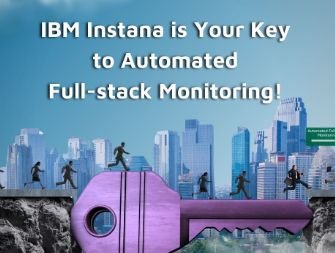The world of technology is evolving at a rapid pace, and the past few years have introduced a new shift in digital transformation and software development. The traditional business model is no longer viable, and to remain relevant in the extremely competitive business landscape, organizations need DevOps.
As more and more companies explore what it takes to implement DevOps practices, the need for highly qualified DevOps engineers has soared. In fact, DevOps engineers are among the most sought-after professions in the IT industry.
So, if you have set your mind on becoming a DevOps engineer, your chances of getting a job are high. Yet, as demand for DevOps increases, so is your competition. Enterprises will absolutely not hire just everyone. Therefore, talent and expertise are a must.
The process of becoming a DevOps engineer requires time and dedication. So, it’s crucial to start off right. We’ve put together a guide to the steps needed to get you on the right track, along with a few resources you can take advantage of.
1. Master at Least One Programming Language
To successfully manage DevOps projects, you need to be familiar with programming languages. While you are unlikely to be writing source code, you will need to automate processes, integrate databases, and occasionally debug code. Therefore, working knowledge of programming languages will help you understand code and review it.
So, mastering one or several programming languages is a great place to start your DevOps roadmap. While you can get away with one, we do recommend that you pick at least two or three to be more competitive. Here are some programming languages that you can choose from: Java, JavaScript, Python, Ruby, C, C++, Go and Node.js.
Here are some free resources you can use:
And some paid resources:
- Learn Rails and Ruby Programming Bundle
- The Complete Node.js Developer Course (3rd Edition)
- Coding for Everyone: C and C++
2. Learn Different Operating Systems
Operating systems will power the technology the teams will be using to work and communicate, as well as run the servers you’ll deploy applications on. So, you’ll need to know how to configure your servers using the command line terminal.
Operating systems you can get started with are Linux, Windows, MacOs, Ubuntu and Unix.
Some free resources you can use are:
- Ultimate Guide: Getting Started with Ubuntu
- Introduction to Operating Systems
- Operating System – Overview
And some paid resources:
3. Know How to Operate in the Terminal
Once you are familiar with operating systems, you should know how to perform systems tasks without the help of GUI or graphical user interface. So, get started on learning how to do bash scripting, text manipulation, process monitoring, system performance, networking, as well as compiling apps from source. PowerShell, Vim, Nano and Emacs are names you should get familiar with.
Here are some free resources for you:
- The Linux Shell Scripting Tutorial
- PowerShell Tutorial for Beginners: Learn PowerShell Scripting
- Bash Reference Manual
And some paid ones:
- Learn Windows PowerShell
- Vim for Ruby Developers
- The Linux Command Line Bootcamp: Beginner to Power User
4. Understand Networking, Security and Protocols
Cybersecurity is becoming more important by the day, especially if you walk in DevOps shoes. So, you’ll need to understand how protocols support various request types. This will prevent the risks of bad players (and there are plenty of them) intercepting your data during transfers and intercepting your applications.
What should you learn? HTTP, HTTPS, SSL and SSH.
A free resource to get your hands on:
And some paid ones:
- TCP/IP and Networking Fundamentals for IT Pros
- DevSecOps : Master Securing CI/CD DevOps Pipeline
- The Complete SSL and TSL Guide: HTTP to HTTPS
5. Learn Server Administration
As a DevOps engineer, you will have to monitor servers. They will be fulfilling requests when users request the information they need. Common web servers and related services to get familiar with are Apache, IIS, Tomcat, Linkerd, NGINX, Envoy, Istio and Caddy.
A few free resources for you:
And some paid ones:
- Complete Apache HTTP Server Course
- NGINX Fundamentals: High-Performance Servers from Scratch
- Apache Tomcat Server from Beginner to Advanced
6. Study Containers and Container Orchestration
Containers gather and organize all application code, libraries and dependencies together in a portable format so code can be written once and run anywhere. Container management is the use of a platform to organize software containers. It is essential to optimize efficiency and streamline container delivery for faster application development and deployment. They combine all libraries in a deployable unit without depleting the host operating system’s CPU and memory resources.
Here are some free resources:
As well as some paid ones:
- Docker Mastery: with Kubernetes +Swarm from a Docker Captain
- Learn DevOps: The Complete Kubernetes Course
- Kubernetes Mastery: Hands-On Lessons from a Docker Captain
7. Specialize in Microservices and Learn about Miniservices
To remain competitive in the DevOps space, you need to use the latest architecture patterns. While many still rely on miniservices, microservices architecture is the way of the future. They allow to improve scalability, system resilience and maintainability, offer greater technology stack flexibility, and enable faster deployments.
Keep in mind that miniservices are still relevant, and you should be familiar with both.
Here are some valuable resources to get your hands on:
- Microservices Architecture Fundamentals
- Application Development Using Microservices and Serverless
- RESTful Microservices Using Node.js and Express Specialization
8. Learn Infrastructure-as-Code (IaC)
Once you master containers and container management, infrastructure-as-code (IaC) is where you should head next. It’s one of the main areas of focus for a skilled DevOps engineer and will be vital for the success of the projects that you work with.
Some tools you’ll need to familiarize yourself with are Puppet, Terraform, Docker Swarm, Ansible, Istio, Chef and more.
Some free resources to get the basics:
- GUIs, CLI, APIs: Learn Basic Terms of Infrastructure-as-Code
- Getting Started with Ansible
- Official Terraform Tutorials
As well as paid ones:
9. Understand Continuous Integration and Continuous Deployment (CI/CD) Tools
One of the core DevOps principles is continuous integration and continuous delivery/deployment (CI/CD). So, it’s a no-brainer that you should get familiar with the subject. CI/CD tools support various phases of the pipeline and help automate processes and handoffs that free up your teams’ hands.
The CI/CD tools for you to learn are GitHub, GitLab, Jenkins and Bamboo.
Free tools to get started with:
And paid ones:
- Jenkins, From Zero to Hero: Become a DevOps Jenkins Master
- DevOps, CI/CD for Beginners
- Continuous Delivery & DevOps
10. Learn and Practice How to Monitor Software and Infrastructure
As a DevOps engineer, you will be responsible for monitoring applications and infrastructure to work on improving efficiency and resolving errors. This will require you to observe data from applications, servers, network devices and more and track metrics like hardware capacity, network throughput and uptime.
Some tools to get familiar with are Grafana, Datadog, Zabbix, Prometheus and Nagios.
A few free tools to start with are:
And a few paid resources:
- Master DevOps Monitoring with Prometheus
- Configuration Management, Monitoring, and Security in DevOps
- Prometheus and Grafana – Learn Monitoring and Alerting Today
11. Study Cloud Providers and Cloud Design Patterns
Modern applications are hosted in the cloud, with cloud services providing numerous benefits such as scalability and cost reduction. As a result, it’s vital to understand the various cloud services available as well as their design patterns and best practices.
Tools you should get familiar with are AWS, Azure, Google Cloud and Heroku.
Free resources to start with:
- Exam AZ-900: Microsoft Azure Fundamentals
- Microsoft Azure Fundamentals Certification Course (AZ-900)
- AZ-900
Post Disclaimer
The information provided in our posts or blogs are for educational and informative purposes only. We do not guarantee the accuracy, completeness or suitability of the information. We do not provide financial or investment advice. Readers should always seek professional advice before making any financial or investment decisions based on the information provided in our content. We will not be held responsible for any losses, damages or consequences that may arise from relying on the information provided in our content.




